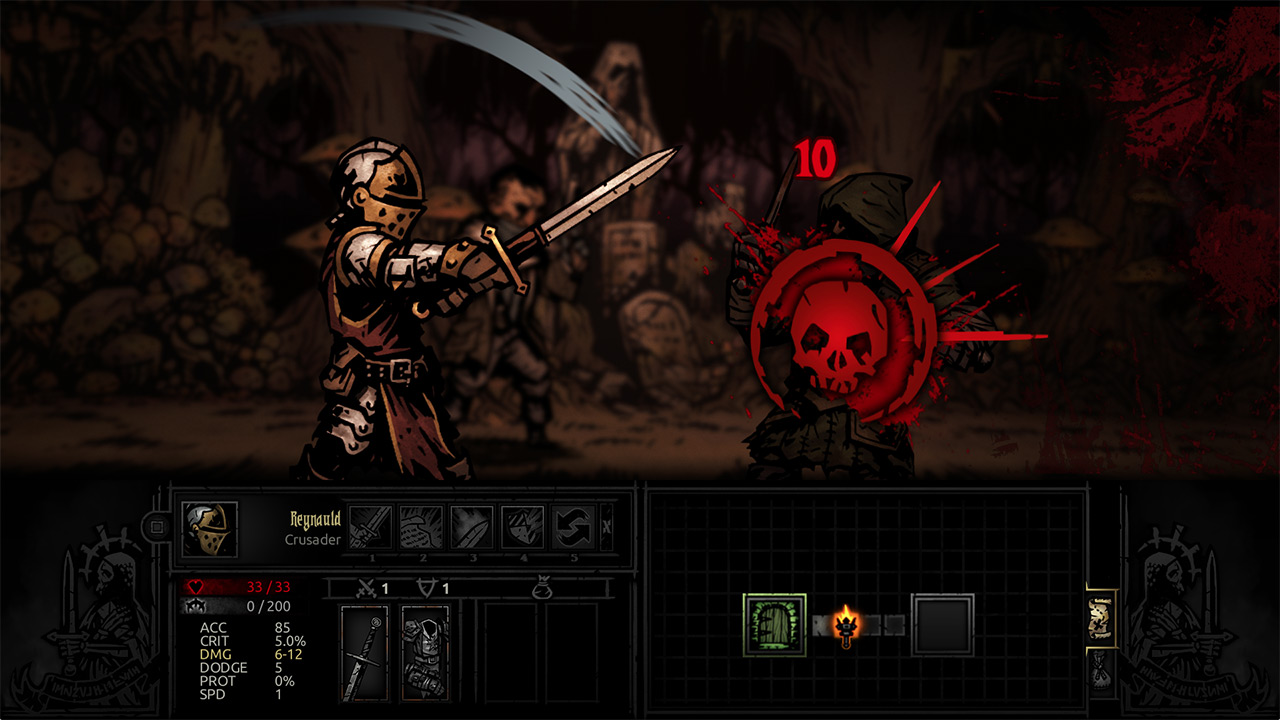

Levelling makes your characters hardier when it comes to the stress of later quests - but it also gives you a lot to lose. Shame they take up space you might need for loot. Provisions are crucial for a successful night's questing. Alongside afflictions, you'll also pick up new quirks from time to time, which amount to modifiers, really, bestowing a weakness to a certain enemy type, say, or an inability to land blows when the light gets too low. The more you linger in the abyss, the more that stress eats away at your heroes, with each psychic collapse bringing about unexpected behaviour - a strike or a pass in battle that you didn't request, for example. The twist is that your team's mental health counts for as much as their physical health - that those disturbing books you encounter can do more damage, in the correct situations, than a pig-man's corrosive vomit. An ancient country house sits on top of a terrible secret, and it's your job to explore the ruins that lie beneath, sending crocodile teams of four heroes slinking out into the darkness where they can loot treasure, spring hideous traps, read disturbing books from sagging shelves and engage in crunchy turn-based battles. A gift that, like The Collector, you must be born with.Īnd while it's true that, at every stage of the early access development, Darkest Dungeon got meaner and more imaginative in its barbarity, it's a pretty villainous thing even in its most basic incarnation. Red Hook Studios, whose logo is a grasping Cthulhian tentacle, has a rare gift for malice. (Actually, it's even more beautiful than that: low light increases danger but also ups the rewards, tempting you towards trouble.) Some of the fine detailing will have come from the game's relatively lengthy spell in early access, but not all of it. And the beauty of the design is everywhere, from the art direction and atmosphere, which inks this dungeon-diving semi-roguelike in the blotchy, heavy-lined stylings of a House of Usher horror comic, to the smallest facets of the mechanics, like the way that hunger is a sort of randomised tax, foisted on you when you least expect it, or the manner in which the ever-decreasing light when you're out adventuring means that you can't catch a breath between encounters without sacrificing a few of the torches you've hopefully remembered to bring with you. Oppressive, cruel and exhilarating, Darkest Dungeon is one of the most beautifully designed games I've seen in a while.

The Collector, with his head that is a skull, with his body that is also skulls, is just too reasonable. This is presumably because The Collector does not have what it takes to be a boss. There's a decent list of bosses in Darkest Dungeon, and The Collector is not on it. A mega-wipe.Īnd here's the thing: The Collector is not a boss. Even that was still pretty okay, until he started summoning floating spine-type things, with heads that matched the heads of my own team. Still, this was okay, until I saw his HP: 70/70. The head, by the way, was a flaking skull, and under the trenchcoat? More skulls. I didn't expect The Collector: a tall fellow in a trenchcoat, with some kind of cage around his head. Still, we'd been at it for four or five rooms, so what do you expect? Only rabies? Only a little masochism? What's the problem?

But if you're only feeling terrible in Darkest Dungeon, you're actually feeling pretty good: one guy in my adventuring party had rabies, another had become paranoid, a third was edging towards something that would turn out to be masochism of some stripe.

More specifically, you could say I was feeling terrible. I was feeling pretty good during my first few hours of Darkest Dungeon - until I met The Collector, anyway. Punishing and beautifully crafted, Darkest Dungeon is cruelty at its classiest.


 0 kommentar(er)
0 kommentar(er)
